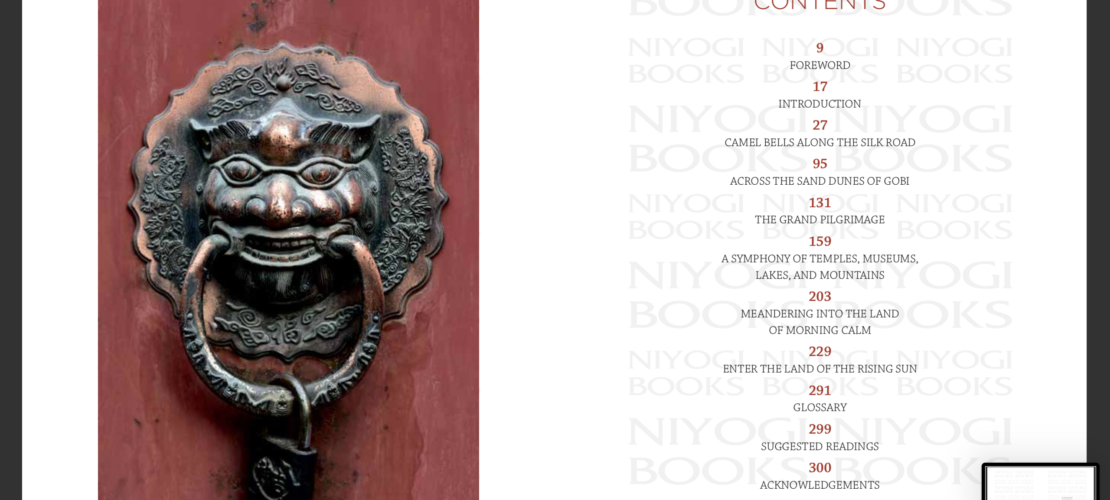
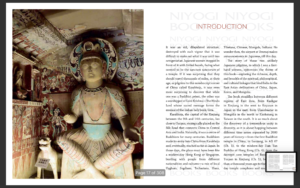 It was an old, dilapidated structure, destroyed with such vigour that it was difficult to make out
It was an old, dilapidated structure, destroyed with such vigour that it was difficult to make out
what it was until two octogenarian Japanese women stopped in front of it with folded hands,
facing what seemed to be the sanctum sanctorum of a temple. If it was surprising that they should
travel thousands of miles, at their age, as pilgrims to this nondescript corner of China called
Karakhoja, it was even more surprising to discover that while one was a Buddhist priest, the other
was a worshipper of Lord Krishna—The Hindu Lord whose sacred message forms the essence of
the Indian holy book, Gita.
Karakhoja, the capital of the Xinjiang between the 9th and 14th centuries, lies close to Turpan,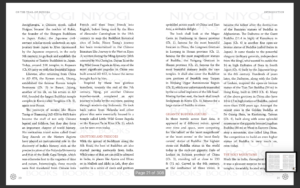
strategically placed on the Silk Road that connects China to Central Asia and India. Naturally, it
was a centre of Buddhism for many centuries. Buddhism made its entry into China from
Karakhoja and, eventually, reached as far as Japan. In those days, the place must have been like a
modern-day Hong Kong or Singapore, bustling with people from different nationalities and
cultures—a mix of local Uyghurs, Sogdians, Tocharians, Huns, Tibetans, Chinese, Mongols, Indians. No wonder then, the airport at Urumqi makes announcements in Japanese, till this day.
The story of the two unlikely Japanese pilgrims, to which I was a first-hand witness, epitomises
the theme of this book—exploring the richness, depth, and breadth of the spiritual, philosophical,
and cultural linkages that bind India to the East Asian civilisations of China, Japan, Korea, and
Mongolia.
The book straddles between different regions of East Asia, from Kashgar in Xinjiang in the west
to Koyasan in Japan in the east; from Ulaanbaatar in Mongolia in the north to Kaohsiung in Taiwan
in the south end. It is as much about the discovery of a tremendous unity in diversity, as it is about
hopping between different time zones separated by 2000 years of history—from the first
Buddhist temple in China in Luoyang in AD 67 (Ch. 1), to the modern-day Tian Tan Buddha of
Hong Kong (Ch. 4); from the decrepit cave temples of Bezeklik and Turpan in Xinjiang (Ch. 1),
built more than a thousand years ago to the modern- day temple complexes and museums of
Famen Si in Xi’an (Ch. 1) and Fo Guang Shan in Kaohsiung (Ch. 4), and the well- preserved temples
of Kyoto (Ch. 6).
These journeys were not undertaken with the idea of writing a book, at first. On the Trail of Buddha—
A Journey to the East took shape slowly when a propitious chain of circumstances, made way from
one place to another, starting with the longest pilgrimage in the world—Kailash. There were
several challenges along the way, like that of language, distances, permissions, scarcity of time
and resources, but none prevailed. Undertaken by all modes of transport, some atop camels,
mules and horses and others on foot, involving treks, especially the ones in Tibet, the most
exciting one was, of course, the high-speed trains of Japan, China, and Taiwan. The endeavour has
been to present all those experiences through images and through first-hand accounts.
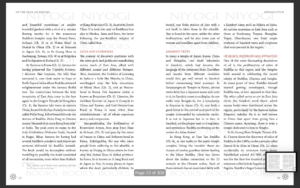 The book has been divided into six chapters, for ease of navigation. The first one covers the
The book has been divided into six chapters, for ease of navigation. The first one covers the
ancient cities along the Silk Road in China that were significantly responsible for the spread of
Buddhism from India into not only China but into much of East Asia. The second one covers the
North-South trade axis that connects China with Mongolia. The third one moves from Sichuan in
south-western China to the primordial Kailash Parvat or Kang Rinpoche and the lake, Mansarovar or Mapham Yumtso in Tibet. The fourth one moves in the south-eastern coastal China and Taiwan from Hong Kong to Shanghai, touching Hangzhou, Suzhou, Nanjing.
It then moves from Taipei to Kaohsiung passing through the city of Tainan, dotted with temples. Possibly one of the most prosperous regions of China, with many modern cities, it is not a surprise that most of the grandest and tallest statues of Buddha have come up here the recent past. The fifth one meanders inside the calmness of Korea, and last but not the least, comes the Land of Rising Sun—a place where history, tradition, religion, and culture are seen most beautifully preserved. In each of these regions, five to ten representative cities have been taken up and, in each of them, quite a few destinations have been highlighted. Together, they make 98 destinations in 37 places, scattered across the East Asian region.
From the wandering monks of Asia to the temples and monasteries they frequented; from the
statues and frescoes in grottoes and temples to those in museums; from the emperors who
embraced Buddhism to the relics of Buddha spread far and wide; from the diverse ethnicities of
the people to their common gods and goddesses—this book attempts to touch upon the very
ethos of the East Asian culture and its deep-rooted linkages with the Indian civilisation, which
many do not know.
THE WANDERING MONKS
We have learnt about Fa-Hien (Faxian) and Hiuen Tsang (Xuanzang), the great Chinese travellers
who came to India seeking spiritual knowledge and Buddhist scriptures, in the 4th and 7th
centuries respectively, in history. The fact is, hundreds and thousands of monks travelled
between India and China, China and Korea, China and Japan, Korea and Japan, contributing to the
spread of Buddhism in most parts of Asia from the ancient times.
About 2000 years ago, the then Chinese emperor, Han Mingdi of the Eastern Han dynasty, had a
dream in which a golden God appeared before him. When the king summoned his ministers the
next day and asked them to explain the dream, he was told about the Great Buddha. Soon, at the
invitation of the emperor, two Indian monks by the name of Dharmaratna and Kasyapa Matanga
were escorted by Chinese envoys,whotravelleddowntheSilkRoad from north-west India to
Luoyang, the then capital of China.
They set up the first recorded Buddhist temple of China called Baima Si (Ch. 1) or the White Horse
Temple in AD 68 and spent the rest of their lives in this temple translating sutras from Sanskrit to Chinese. Their tombs are in the temple premises, and 2000 years down the line you can still feel their presence
through their images captured and preserved with great care by temple authorities.
Over the next 1000 years, there was a continuous bilateral exchange of travellers and monks
between the two great civilisations until the late 12th century. The attack of Bakhtiyar Khalji on
Nalanda University on AD 1193, which left it burning for months, marked the end of a glorious
chapter in the history of Asia.
Similarly, the famous monastery of Shaolin (Ch. 1) was set up by the Indian monk, Batuo, around
AD 498. Another Indian monk called Bodhidharma or Damo made it iconic in AD 525. He is
believed to have brought the South Indian martial arts of kalaripayattu into China, which
blossomed into the world-renowned kung fu or wushu, later.
Three other great enlightened masters from India who went to the Daxingshan Temple (Ch. 1) in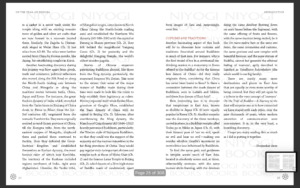
the 8th century in Xi’an, were Amoghavajra (Bukong), Subhakarasimha (Shan-wu-wei), and
Vajrabodhi (Tang Sanzang). They translated many Buddhist scriptures, sutras, and tantra from
Sanskrit to Chinese. One of the disciples of Amoghavajra, a Chinese monk, called Huiguo, became the teacher of Kukai, the founder of the Shingon Buddhism in Japan.Kukai, the Japanese civil-servant scholar-monk undertook an epic journey from Japan to Xi’an (sponsored by the emperor) in the early 9th century to go back and establish the Vajrayana or Tantric Buddhism in Japan. Today, around 100 temples in Koyasan (Ch. 6) carry on with this beautiful legacy.
Likewise, after returning from China in AD 678, the Korean monk Uisang established the famous
Korean temple Beomeosa (Ch. 5) in Busan. Jajang, another of his ilk, on his return in AD 646,
founded the largest Buddhist temple complex in Korea called Tongdosa (Ch. 5) again near Busan.
The journeys of monks like Hiuen Tsang or Xuanzang (AD 628 to 645) have become the stuff of
not only Chinese legend and folklore, but they also form an important chapter of world history.
His meticulous travel notes called Records of the Western Regions have played an instrumental
role in the discovery of India’s history, such as the precise location of the Nalanda University and
that of the Bodh Gaya Temple, which was otherwise lost to the vagaries of time and nature.
Interestingly, these records were first translated from Chinese into French and then from French
into English, before being used by the likes of Alexander Cunningham in the 19th century to map the Buddhist historical sites of India.
Hiuen Tsang’s journey has been immortalised in the Chinese literature like Journey to the West or Xiyou
Ji, written during the Ming dynasty (15th century) by Wu Cheng’en. Dayan Ta or the Big Wild
Goose Pagoda in Xi’an, one of the most significant pagodas in China was built around AD 652, to
house the sutras brought back by him.
Inspired by these two glorious travellers, towards the end of the 7th century, Yijing, yet another
Chinese traveller-monk, completed an epic journey to India by the sea route, passing through
modern-day Indonesia. He took back sutras from Nalanda and other places that were eventually
housed in a temple called Little Wild Goose Pagoda or the Xiaoyan Ta in Xi’an (Ch. 1), which can
be seen even today.
GROTTOES AND FRESCOES
With the spread of Buddhism along the Silk Road, the best of Buddhist art also started moving
eastwards from India. While some of that art can still be admired in India, in places like Ajanta
and Ellora or in Mulbek and Alchi in Leh, they also survive in a series of caves and grottoes
sprinkled across much of China and East Asia, a veritable delight.
The book shall look at the Magao Caves in Dunhuang in Gansu province (Ch. 1), famous for the
most beautiful frescoes in China, the Longmen Grottoes in Luoyang in Henan province (Ch. 1),
famous for the most magnificent statues of Buddha, the Yungang Grottoes in Shanxi province (Ch.
2), famous for the most beautiful statuary inside the cave temples. It shall also cover the Buddhist
cave grottoes of Bezeklik near Turpan in Xinjiang Uygur Autonomous Region (Ch. 1), which was
unfortunately marauded by the so-called ‘explorers of the Silk Road’. Moving further east, the
book shall touch Seokguram in Korea (Ch. 5), famous for a large statue of Buddha in stone.
GIGANTIC BUDDHA STATUES
In these travels across East Asia, it appeared as if different rulers, spread over time and space,
were competing for ‘the tallest’ or the ‘most magnificent’ or the ‘most serene’ or the ‘most finely
carved’ statue of Buddha. The highest stone-cut Buddha statue in the world today is the rock-cut
gigantic Dafo of Leshan in Sichuan province of China (Ch. 3), standing tall at close to 233 ft (71
m). Carved in the 8th century, at the confluence of three rivers, it became the tallest after the
destruction of the Bamiyan statues of Buddha in Afghanistan. The Daibutsu or the Giant Buddha (11.4 m high) of Kamakura in Japan (Ch. 6) is another fine open-air bronze statue of Buddha (called Butsu in Japan). It came thanks to the powerful shoguns (military generals, independent from the king), who wanted to outdo the 16 m high Daibutsu of Nara in South Japan (Ch. 6) built by the Japanese kings in the 8th century.
Hundreds of years later, the Daibutsu, along with the Dafo of Leshan, inspired the open-air bronze
statue of the Tian Tan Buddha (34 m) in Hong Kong, built in 1993 (Ch. 4). Many of the above
grottoes in China also have 16 to 17 m high statues of Buddha, carved more than 1500 years ago.
Amongst the recent ones is the Golden Buddha at Fo Guang Shan, in Kaohsiung, Taiwan (Ch. 4),
built along with some splendid museums or the gigantic bronze Lingshan Buddha (88 m) at Wuxi
in Eastern China, atop a mountain, also called Ling Shan. The competition to build an even higher
statue of Buddha is very much on, even today.
THE HOLY MOUNTAINS
Much like in India, throughout East Asia, it was a pleasant surprise to see the holy temples
invariably located atop mystical and beautiful mountains or amidst beautiful gardens with a river
or flowing stream nearby—be it the numerous Buddhist temples atop the Mount Emei, Sichuan (Ch. 3) or at Wutai Shan1 in Shanxi in China (Ch. 2) or at Koyasan in Japan (Ch. 6), or Fo Guang Shan in
Kaohsiung, Taiwan, (Ch. 4) or at Bulguksa and Seokguram in Korea (Ch. 5).
AtHaeinsainKorea(Ch.5),famousfor having preserved the Tripitaka Koreana, I discover that
Gayasan, the hills that surround it, owe their name to Gaya or Bodh Gaya in India where Buddha
attained enlightenment under the famous Bodhi tree. The connections between the holy
mountains of East Asia come to the fore again in the Lingyin Temple in Hangzhou (Ch. 4), the
famous lake town in eastern China, located in the lap of a holy mountain called Feilai Feng, full of
beautiful rock-cut statues of Buddha. Feilai Feng in Chinese means ‘the peak that came flying from
afar’ or India. The peak owes its name to the holy Gridhakuta (Vultures Peak), located in Rajgir,
Bihar, famous for having had several Buddhist conclaves and important sermons delivered by
Buddha himself. The book would be incomplete without travelling to possibly the most venerated
of all mountains, none other than Kailash or Kang Rinpoche (Ch. 3), located in South Tibet. It is
holy not only to Buddhists but also to Hindus, Jains and Bons, the latter following the pre-
Buddhist religion of Tibet, called Bon.
GODS AND GODDESSES
The journey of discovery continues with the same gods and goddesses manifesting across much
of East Asia, albeit with different names and different features. Thus, Saraswati or Manjushree,
the Goddess of Learning in India becomes Wenshu in China, worshipped atop the holy mountains
of Wutai Shan (Ch. 2), and as Munsu-bosal in Korea. Her Japanese avatar is known as Benzaiten
(Ch. 6). Likewise, the Goddess Kannon in Japan is Guanyin in China and Taiwan; and God
Gwanse’eum Bosal in Korea is none other than Avalokiteshwara—all of whom represent mercy
and compassion.
Samantabhadra, the Bodhisattva of Benevolent Action, lives atop Emei-Shan in Sichuan (Ch. 3)
and goes by the name of Puxian in China and Bohyeon-bosal in Korea. Kshitigarbha, the one who
cures people from suffering in the afterlife, is known as Dizang in China where he lives atop the
Jiuhua Shan in Anhui province. In Korea, he is known as Ji Jang Bosal and in Japan as Jizo. In many
places in Japan where the dead, particularly children, lie buried, one finds statues of Jizo with a
red cloth to bless them in the afterlife.
Jizo is found in the open, unlike the other bodhisattvas, and he also takes care of women and
travellers apart from children.
SANSKRIT TEXTS
In many a temple of Japan, Korea, China and Mongolia, one finds references in Sanskrit, which had
become the language of the continent then. Travellers and monks from different countries would
first get well versed in Sanskrit before commencing their journeys. In Sanjusangen-do Temple in
Kyoto, almost every deity has a Japanese name, and next to it is its Sanskrit name on display. As
one walks into Rengejo-in, for a templestay in Koyasan in Japan (Ch. 6), one finds a giant letter in
the central courtyard of the temple surrounded by concentric circles. It is not in Japanese but is,
in fact, in Sanskrit, as the plaque next to it explains, and symbolises ‘Buddha meditating at the
centre of a lotus flower’.
In Hong Kong, at Tian Tan Buddha (Ch. 4), as one walks to the main temple complex, lining the
corridor there are statues of twelve guardian deities leading to the Giant Buddha. Here one learns
about the Indian connection to the 12 animals in the Chinese zodiac. Each of these animals has an
associated deity with a Sanskrit name such as Mihira or Indra. At various museums in East Asia
such asthose at Dunhuang, Turpan, Shanghai, Taipei, Ulaanbaatar, one finds ample evidence of Sanskrit
texts and scriptures that were present in the region.
OF RELICS, EMPERORS AND DYNASTIES
One of the most fascinating discoveries of all is the proliferation of relics of Buddha in this region
and the temples built around it, celebrating the sacred trinity of Buddha, Dharma and Sangha. At
some point of time, Buddha himself started getting worshipped, though Buddha was, in fact,
opposed to that idea. His relics called sarira or sari in East Asia (from the Sanskrit word of sharir,
which means body) were distributed across the region, particularly by the famous Indian
Emperor, Ashoka. He is so well known in China that apart from giving him a Chinese name,
Ayuwang, there is even a temple dedicated to him in Ningbo.
In Fo Guang Shan Temple, Taiwan (Ch. 4), I learnt about the discovery of relics of Buddha in the
1980s, under a temple called Famen Si in Xi’an in China (Ch. 1), when accidentally its structure
broke down. Established around AD 300, the temple was for the first few hundred years of its
existence called Ashok Pagoda or Ayuwang Pagoda. Buddha’s finger bones were found in a casket
in a secret vault under the temple along with an exciting treasure
Another fascinating discovery during this journey was how apart from goods, trade, and
commerce political influences also moved along the Silk Road or along the North-South trading
axis between China and Mongolia or along the maritime routes between India, China, Japan and
Korea. For instance, the great Kushan dynasty of India which stretched from the Tarim basin in
Xinjiang of China down to Patna in Bihar, from the 1st–3rd centuries AD, originated from the
nomadic Yuezhi tribe. They were originally centred around Gansu province of China, till the
Xiongnu tribe, from the north-eastern steppes of Mongolia, displaced them and pushed them
westward to Bactria. Here they defeated the Greco-Bactrian kingdom and established themselves
as Kushan dynasty, the most famous ruler of which was Kanishka.
The territory of the Kushans included regions northwest of India right unto Afghanistan. Likewise, the Tuoba tribe, of Mongolian origin, came down to North China (along the North- South trading axis) and
established the patronising Buddhism abound, like those from the Tang dynasty, particularly, the renowned Empress Wu Zetian. This went to the extent that some of the major statues of Buddha made during their time were made to look like the rulers to help establish their legitimacy as rulers. History
repeated itself when Kublai Khan, grandson of Genghis Khan established the Yuan dynasty of
China with its capital in Beijing (Ch. 2). Likewise, after overthrowing the Ming dynasty (which
succeeded the Yuan dynasty), the Manchus of Qing dynasty (AD 1644–1912) heavily patronised
Buddhism, particularly; the Tibetan style of Vajrayana Buddhism, so that they could win the
support of the majority and the various minorities in the far-flung provinces of China. They would
pay regular visits to important shrines and temples such as those of Wutai Shan (Ch. 2.) and the
famous Lama Temple in Beijing (Ch. 2), which boasts of a 26 m high statue of Buddha made of
sandalwood, apart from images of Tara and, surprisingly, even Sita.
Northern Wei dynasty (AD 386–534) with the capital at Datong in Shanxi province (Ch. 2). They
left behind the magnificent Yungang Caves (Ch. 2.) for posterity and the delightful Hanging
temple, the world’s oldest wooden pagoda.
CUSTOMS AND TRADITIONS
Another fascinating aspect of this book will be to showcase how customs and traditions flourished
around Buddhism in much of East Asia. For instance, why is the first round of tea in a ceremonial
tea- drinking session in a monastery in Korea offered to the Buddha? As for the famous lion dances
of China—did they really originate there, considering that China has never been home to lions? Is
there a connection between the mask dances of Buddhism, seen in Ladakh and Sikkim, and these
lion dances of East Asia?
How interesting was it to discover that templestays in East Asia, known as shukhbo in Japan (Ch.
6) were equally popular in Korea (Ch. 5). Another surprise was the discovery of the three
monkeys, carved in stone, in a Buddhist temple called Tosho-gu in Nikko in Japan (Ch. 6), with
their famous pose of ‘see no evil, speak no evil and hear no evil’—making one wonder whether
Gandhi’s movement on nonviolence was influenced by Buddhism.
To find the same gods and goddesses in temples across much of East Asia, located in absolutely
serene and, at times, otherworldly environs, with the same incense sticks burning, with the
devotees doing the same dandwat (bowing down on one’s knees before the Supreme), with the
same offering of fruits and flowers, with the same mantras being recited, be it the Om mane padme hum or the namo ami butsu, thesame ceremonies and customs, the same grottoes and cave temples with beautiful frescoes, and the same statues of Buddha, cannot but generate the ethereal feeling of ‘oneness’, aptly described in Sanskrit as Vasudhaiva kutumbakam’ (the wholeworldisonebigfamily).
There are surely many more destinations and places in East Asia that are equally or even more
worthy of being covered, but they will yet again be a tribute to the very concept of ‘oneness’. On
the Trail of Buddha—A Journey to the Eastwillsurpriseoneastohowconnected we have stayed with
each other, over the past thousands of years, when modern amenities of communication were
non-existent. It is, in the very least, a humbling discovery.
I hope you enjoy reading this as much as I did in putting it together.
— Deepankar Aron
